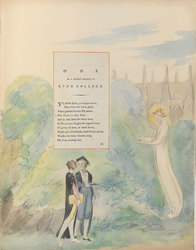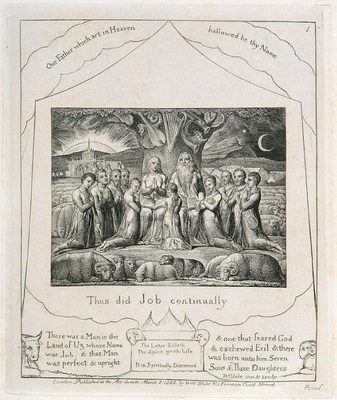Blake at Union
This website is an enhanced catalog of Schaffer Library’s collection of rare works related to author, artist, and printmaker William Blake. Utilizing research by Union College undergraduates, it also showcases student creativity and engagement with the collection. Selected images and links are included to inspire additional research.
Blake@Union celebrates the inventiveness of Blake’s printing techniques and art as well his writings. Blake’s skill is represented here by his mythological figure Los, surrounded by his working tools. Hands-on efforts to re-create and understand Blake’s own working methods continue to engage other makers at Union and worldwide.
Union College has a long tradition of actively engaging students with Blake’s works. Student projects have ranged from exhibits to performance events to the creation of prints inspired by Blake’s engravings. The Blake@Union website preserves and links these projects together and fosters conversations among current students and alumni.
Union College’s Blake collections include commercial works published in his lifetime, modern reproductions from independent printmakers, and a complete set of the legendary Trianon Press facsimiles of Blake’s works. A particular treasure is the library’s copy of Blake’s Job, reprinted from plates engraved by Blake himself.
This image is from Blake’s watercolor illustrations for Thomas Gray’s “Ode on a Distant Prospect of Eton College.” Blake often engraved or designed illustrations for the works of others, in addition to creating his own illuminated books. See the catalog entry for more information about this work.
This image, from Blake’s Jerusalem, is of Los, a complex figure broadly embodying creative energy in Blake’s writings. He appears in a number of Blake’s illuminated works. Here he is shown at his forge, in conflict with opposing forces. See the catalog entry for more information about this work.
This image is from Blake’s engravings for the Book of Job. It displays his mastery of the engraver’s art and speaks to his long engagement with religious subjects as well as with the political and social movements of his day. See the catalog entry for more information about this work.



